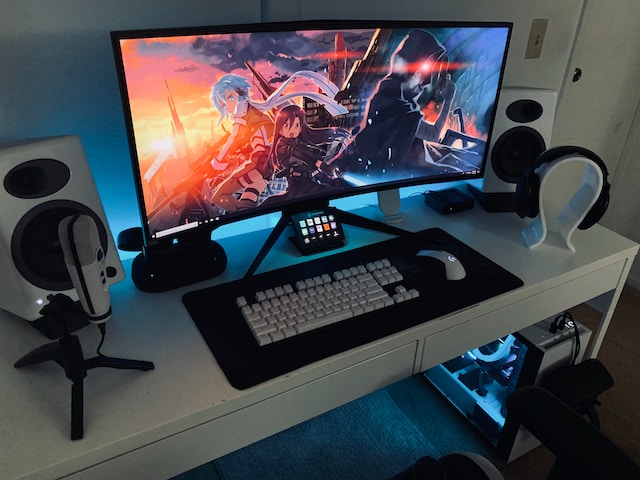The world of gaming has come a long way since Sony entered the market with the first PlayStation. What started as a bold move against giants like Nintendo and Sega turned into one of the biggest stories in tech history. Over the past three decades, Sony shaped the way millions of people play games. At the same time, the entire gaming industry has shifted, especially with the rise of mobile gaming, online platforms, and now artificial intelligence. While topics like best non GamStop casinos grab attention in certain circles, the bigger picture in gaming continues to evolve at a fast pace. Here’s a closer look at how Sony became a leader, what challenges lie ahead, and what’s changing for developers, companies, and you as a gamer.
Sony’s Early Success Came from Targeting Older Audiences
Back in the 1990s, video games were often seen as toys for kids. Most games were colourful, simple, and aimed at children. Sony changed that. Instead of copying what Sega and Nintendo were doing, they offered something more mature. PlayStation games had deeper stories, more serious themes, and better graphics for the time. This attracted older teens and adults, many of whom had grown up with earlier consoles and wanted more. The PlayStation 2 became the best-selling console of all time, with over 160 million units sold. It proved that gaming could be a serious part of entertainment, not just a hobby for kids. That decision helped shape what gaming looks like today.
High Prices Didn’t Always Work Out for Sony
Sony hasn’t always made the right move. When the PlayStation 3 came out, it was priced too high. Many people were shocked by the cost, and sales dropped at first. Sony had to adjust and admit the mistake. Since then, they’ve stayed in the higher range for pricing but are more careful not to go too far. Pricing is a sensitive area. If a console is too expensive, fewer people will buy it, even if the quality is good. Today, Sony tries to offer value by including strong features and exclusive games that make people feel the money is worth it.
Japan Continues to Lead in Console Innovation
Japan has always been strong in consumer electronics. Companies like Sony and Nintendo are famous for creating quality products. One reason for their success is their connection to other creative industries like animation and manga. These stories often become games, and that link helps keep content fresh and exciting. Japan also takes risks with game ideas. Where else would you find a game about a plumber jumping on turtles or a fantasy role-playing game with talking animals? That creativity is part of why Japanese consoles have stayed relevant for so long.
The Move Toward Portable Gaming
Sony is now developing a handheld device to play PS5 games on the go. This move comes as more people want flexibility in how and where they play. Devices like the Nintendo Switch and Steam Deck have shown that portable gaming can be popular. Even Microsoft is said to be working on something similar. Portability helps people fit games into their daily life—whether they’re commuting, travelling, or just want to relax on the sofa without turning on the TV. For many, it’s easier to pick up a handheld device than sit down for a full session on a console. Sony wants to stay competitive in this growing space.
Hardware vs. Software: Where the Focus Is Shifting
In gaming, there’s always a back-and-forth between hardware (like consoles and chips) and software (like games and services). In recent years, the focus was on content—big game studios, exclusive titles, and massive releases. But now, attention is turning back to how games are delivered. With inflation and tight budgets, companies want to make gaming more accessible without relying on people buying expensive consoles. That’s why mobile gaming is growing, and why cloud gaming could be next. If you don’t need a fancy device to play high-quality games, more people can join in. This shift could expand gaming to even more countries and income levels.
Gaming No Longer Needs Top Graphics to Succeed
Some of the most successful games weren’t the most powerful. Take the Nintendo Wii, for example. It wasn’t the fastest or most advanced console, but it was fun. People of all ages played it because it was simple and easy to use. That shows you don’t always need the best graphics or the biggest screen to enjoy a game. Many people just want a fun and social way to relax. This is why mobile games and party games are so popular—they don’t need to be complex to keep you engaged. Sometimes, simple is better.
Artificial Intelligence Helps Developers Behind the Scenes
AI has been part of game development for years. It helps with tasks like creating large environments, checking for bugs, and designing smart in-game enemies. Now, as AI becomes more advanced, smaller teams can use it to speed up their work. This is important because making a video game takes time, money, and skilled people. AI can help with parts of the job that are slow or repetitive, allowing developers to focus on creativity. Large studios will also use AI to make their teams more efficient. But while AI can help, it won’t replace the human touch needed to create fun and meaningful games.
Job Changes and Industry Pressure Are Becoming Common
In the last few years, many people in the game industry have lost their jobs. Even big companies are cutting staff. The industry is looking for ways to make development faster and cheaper. That’s where tools like AI come in. At the same time, people working in gaming are asking for better conditions. Unions are starting to form, and more workers want fair pay and job security. Making games is not easy—it involves writing, design, sound, coding, testing, and more. It’s like making a movie and a song and a story all at once. This kind of work can’t be rushed, even with better tools.
Cloud Gaming May Be the Future
Soon, you might not need a console or disc to play games. Cloud gaming lets you stream a game over the internet, like watching a movie. You don’t download anything—you just log in and play. This could change everything. No need to buy a powerful computer or console. You could play top games on a basic screen with a strong connection. This would also make gaming more affordable, because you wouldn’t need to spend so much on equipment. Companies are already testing cloud gaming, and it may soon become a normal part of how people play.
Games Are Becoming Social Spaces
Today’s games are about more than just finishing levels or beating bosses. They’re a place to hang out, talk, and share. People make friends online through games. They team up, compete, and spend time together. Young people, especially, treat games as part of their social life. They don’t care if a game is the best-looking. What matters is if they can play with others, laugh, and have fun. This social part of gaming will only grow. Whether it’s through consoles, phones, or cloud platforms, the focus is shifting from power to connection—and that’s changing how everyone sees video games.



